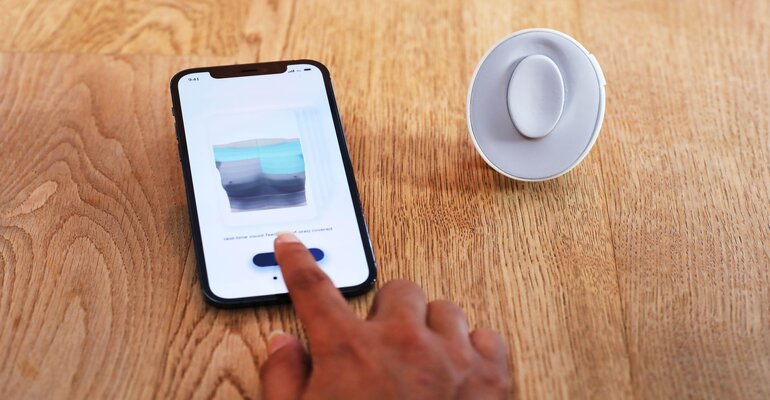The device, which comes with a handheld tool and accompanying app, hopes to encourage individuals to stick to a more regular breast self-check schedule.

In 2020, 684,996 people died from breast cancer globally. In 2022, it is estimated that 43,250 women and 530 men will die of the cancer. A co-founder of Dotplot, Debra Babalola, says it was a personal breast cancer scare that inspired her to create an at-home early detection tool to address the need for more at-home diagnostic technology.
Now, Dyson has tapped the company as one to watch by recently awarding Dotplot with its prestigious UK James Dyson Award. The James Dyson Award celebrates the next generation of design engineers and is open to current and recent design engineering students. Of note, one in five inventors from the award go on to commercialize their inventions. Babalola and her co-founder, Shefali Bohra, are recent innovation design engineering graduates at Imperial College London and the Royal College of Art.
Dotplot is an at-home breast health monitoring tool that offers guided self-checks on a monthly basis and is designed to facilitate the early detection of breast cancer by encouraging and enabling women to stick to a monthly breast self-check routine. Dotplot uses a handheld device that pairs with an app. To use the tool, individuals are taken through the apps one-time onboarding which includes entering details of a period cycle – if applicable – to offer the correct date for the self-check. The user then builds a personalized map of their torso by providing their bra size, breast shape, and sliding the handheld device to rescale the baseline model. Once the onboarding is finished, the app guides the user through a self-check by showing which areas need to be scanned. Each month’s reading is then compared to previous scans to highlight any abnormalities developing in the tissue.
“The position of the device on the torso is determined by Dotplot’s pre-trained system which analyses the orientation of the device relative to the ground,” according to the company’s winner page on the Dyson award website. “A sound signal of a known frequency is emitted to record the tissue composition at the site.”
For the technical development of the tool, the co-founders found that using soundwaves resulted in difference in readings in areas with or without lumps. “The prototype could detect lumps up to 15mm deep. We refined our prototype and used machine learning to sample different lump sizes at different depths and their features were extracted.”
While medical professionals welcome the invention, they warn that its no substitute for going to the doctor. Frankie Jackson-Spense, MD, noted, “It isn't a substitute for going to your doctor - it doesn't diagnose anything.”
And, Babalola said, that’s not their goal. “We're not replacing medical professionals, we are enabling women to be confident in the self-checks they are doing.”
Dotplot has also won the Venture Catalyst Challenge, Imperial College’s largest entrepreneurial competition and was awarded the Helen Hamlyn Design Award for Digital Inclusion. Additionally, the tool recently got accepted onto the MedTech Super Connector cohort (2022-2023).
Next, Dotplot will progress to the international stage of the Dyson award, with the winner being announced on Nov. 16.
About the Author(s)
You May Also Like




